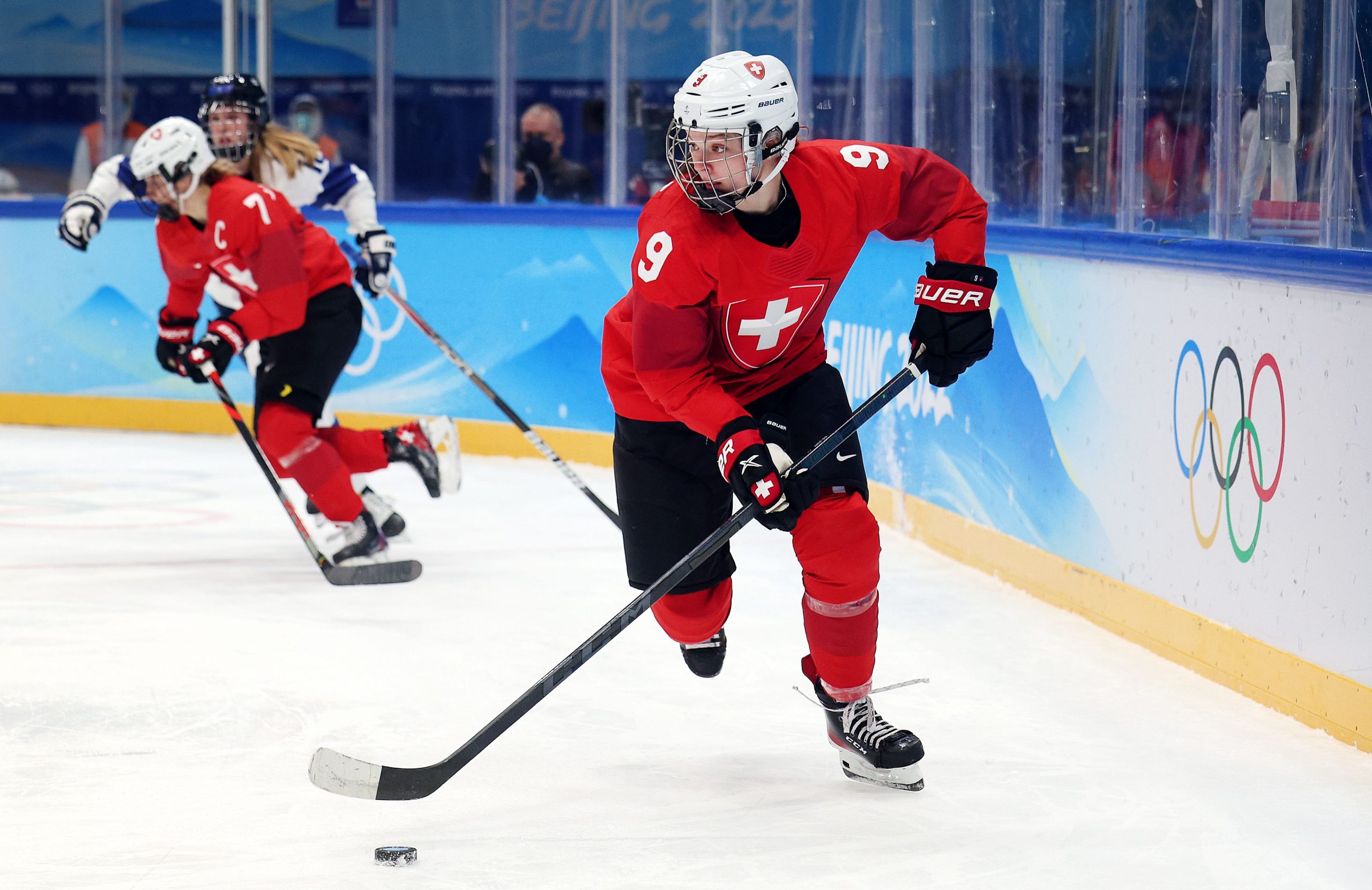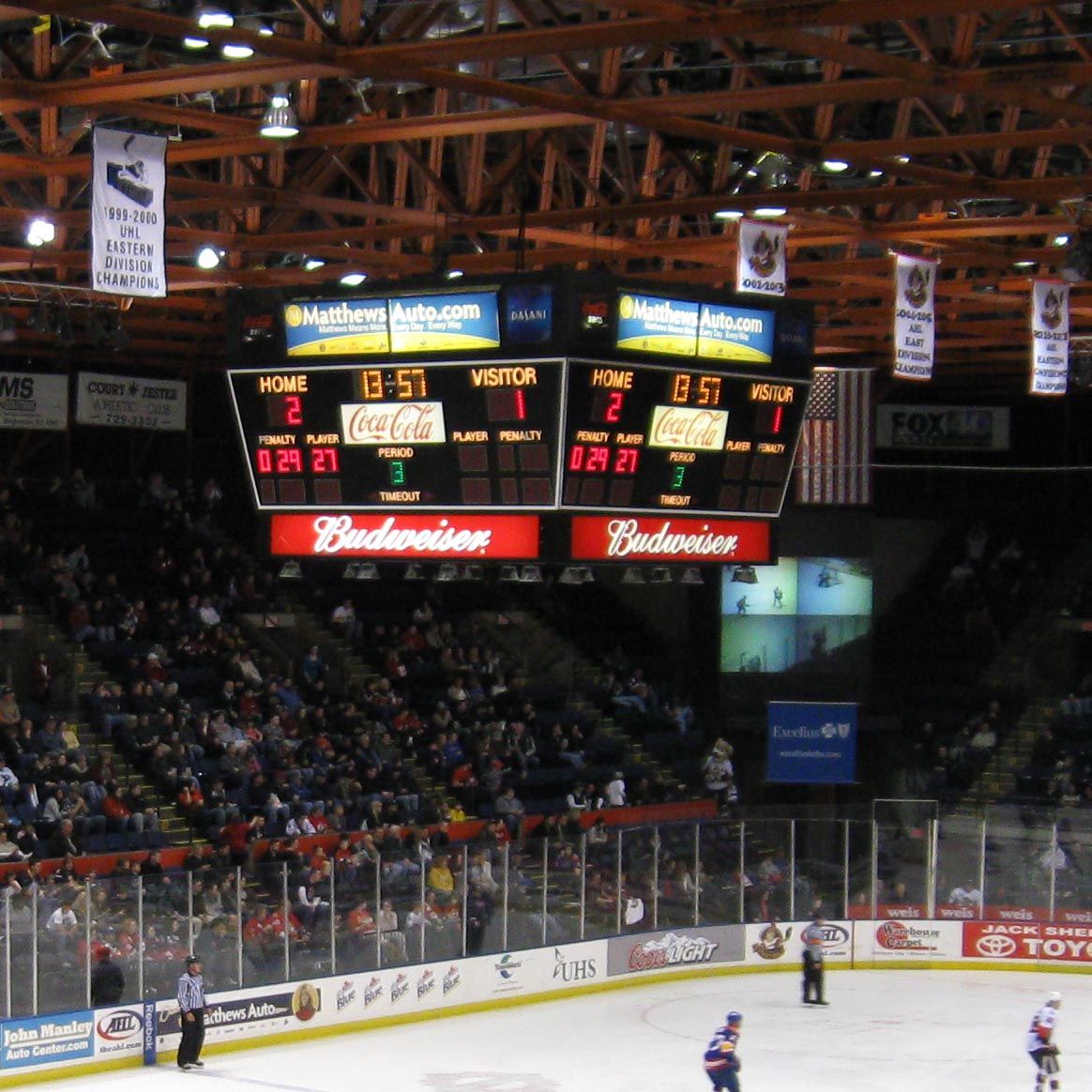Have you ever wondered how long a hockey game lasts? How many periods are played, and how many minutes each period lasts?
What about overtime? In this blog article, we’ll dive into the details to uncover the answers to these and other questions. Get ready to unravel the mystery of hockey game length and gain a deeper understanding of the excitement that unfolds on the ice!

Table of Contents
- 1 How long is a NHL hockey game
- 2 How long is a college hockey game
- 3 How long is a high school hockey game
- 4 How does the game clock work during a hockey game?
- 5 Overtime and Shootouts in Hockey
- 6 Hockey penalties and how long do they last
- 7 How long is hockey intermission
- 8 What affects the duration of a hockey game
- 9 Historical changes in the duration of the game of Hockey
- 10 Conclusion
How long is a NHL hockey game
An NHL hockey game is a thrilling and action-packed event that captures the attention of fans around the world. A typical NHL game consists of three periods, each lasting 20 minutes of actual gameplay. However, when factoring in commercial breaks, intermissions, and potential delays, the total duration of an NHL game can range from approximately two hours and 15 minutes to three hours.
During intermissions, which typically last 17 minutes and 30 seconds between each period, players take a break to rest and strategize with their teams. Commercial breaks also occur throughout the game, allowing players to catch their breath and providing time for advertising.
In the event of a tied game after the third period, NHL games may go into overtime, which is a five-minute period of three-on-three play. If the game remains tied after overtime, it may proceed to a shootout, where each team takes turns attempting to score goals.
Overall, the length of an NHL hockey game can vary depending on various factors, but fans can expect an exciting and fast-paced experience that keeps them on the edge of their seats from start to finish.
How long is a college hockey game
College hockey games follow a similar structure to NHL games, but there are some differences in terms of game duration. Like the NHL, a college hockey game typically consists of three periods, each lasting 20 minutes of actual gameplay, for a total of 60 minutes on the ice.
However, one key difference is that in college hockey, if neither team scores during the five-minute overtime period, the game may end in a tie, unless it is playoffs where different rules may apply. This is in contrast to the NHL, where tied games after overtime proceed to a shootout.
As with NHL games, college hockey games also have intermissions between each period, typically lasting around 15 minutes, for players to rest and strategize. Additionally, commercial breaks may also occur during the game, providing players with brief breaks and allowing time for advertisements.
Overall, the length of a college hockey game can vary depending on factors such as overtime and potential delays, but fans can expect an exciting and competitive experience that showcases the talents of young hockey players at the collegiate level.
How long is a high school hockey game
A typical high school hockey game consists of three periods, each lasting 15 minutes in duration. However, the total length of a high school hockey game can vary due to various factors, including stoppages in play, penalties, and intermissions. On average, a high school hockey game can last approximately 1.5 to 2 hours, including the time for warm-up, pre-game rituals, and post-game activities.
In addition to the three periods, high school hockey games may also have one or two intermissions, depending on the league or association rules. Intermissions are typically 10 to 15 minutes in length and provide players with a break and an opportunity for coaches to provide feedback and make adjustments.
It’s important to note that game duration can vary depending on different factors, such as overtime periods, shootouts, or delays due to weather or other unforeseen circumstances. It’s always best to check with the specific rules and regulations of the league or association hosting the high school hockey game for accurate timing information.

How does the game clock work during a hockey game?
- Running Time: In regular game situations, the clock runs continuously, counting down from the designated game length (e.g., 15 minutes per period). The clock only stops during specific instances such as goals, penalties, or timeouts.
- Stoppage Time: The clock may stop during stoppages in play, such as when the puck goes out of bounds or there is an icing call. The clock resumes when the puck is dropped or play is restarted.
- Penalty Time: When a player receives a penalty, they are required to serve time in the penalty box. The clock counts down the time of the penalty, and the player remains off the ice until the penalty time has expired.
- Overtime: In case of a tied game at the end of regulation time, overtime periods may be played with the clock typically stopping for certain situations like goals, penalties, and timeouts.
Overtime and Shootouts in Hockey
Overtime periods in hockey games are played when the regular game time ends in a tie. The rules and duration of overtime periods may vary depending on the league or association. In some high school hockey leagues, a sudden-death or “golden goal” format is used, where the first team to score during the overtime period wins the game. Overtime periods are typically shorter than regular game periods, usually lasting around 5 to 10 minutes. If no team scores during the overtime period, the game may end in a tie or proceed to a shootout.
Shootouts are used to determine a winner in case of a tie after overtime. Shootouts typically involve a series of penalty shots, where a designated number of players from each team take turns attempting to score against the opposing team’s goaltender. The team with the most goals after the shootout is declared the winner of the game. Shootouts are often used in high school hockey leagues as a way to determine a winner in a timely manner and avoid extended game durations.
If a high school hockey game goes into overtime or a shootout, the length of the game can vary. Overtime periods and shootouts can add additional time to the game beyond the standard regulation time of three periods. Overtime periods may be sudden-death, meaning that the game can end quickly if a team scores, or they may last the full duration of the designated overtime period. Shootouts also add time to the game as each player takes their turn attempting shots. The length of the overtime or shootout can vary depending on the league or association rules, and it may impact factors such as player fatigue, strategy, and overall game duration.

Hockey penalties and how long do they last
In the context of hockey, a penalty is a consequence imposed on a player for breaking the rules of the game. Penalties are given by the referees or officials and can result in the penalized player being temporarily removed from the ice and the team playing with a disadvantage. The duration of a penalty varies depending on the type and severity of the infraction.
In high school hockey, penalties are typically categorized into two types: minor penalties and major penalties. Minor penalties are less severe and result in the penalized player serving two minutes in the penalty box, leaving their team short-handed for that duration. Common minor penalties in hockey include tripping, hooking, and slashing. Major penalties, on the other hand, are more serious and result in the player serving five minutes in the penalty box. Major penalties are usually given for actions such as fighting, checking from behind, and high-sticking, and may also result in the player being ejected from the game.
In some cases, a penalty may also result in a team being penalized with a “power play,” which means they have a numerical advantage over their opponents due to the opposing player being in the penalty box. Power plays typically last for the duration of the penalty or until the penalized team scores a goal.
It’s important to note that penalties can impact the flow and dynamics of the game, as teams with a player in the penalty box are at a disadvantage. Players and teams need to be mindful of the rules and avoid penalties to maintain a fair and competitive game.
How long is hockey intermission
Hockey intermissions are breaks between periods during a game that allow players to rest, regroup, and receive coaching instructions. The length of intermissions can vary depending on the league, level of play, and broadcast requirements. In most organized hockey leagues, intermissions typically last for 15 minutes, although they can be longer in some cases.
During intermissions, players have an opportunity to replenish their energy levels, rehydrate, and receive medical attention if needed. Coaches can use this time to strategize, make adjustments, and provide feedback to their teams. Additionally, intermissions also provide broadcasters with time for commercials, analysis, and other programming.
Intermission lengths may be shorter in recreational or non-professional leagues, where game logistics and broadcast requirements may differ. In some cases, intermissions may be as short as 10 minutes or even shorter in informal games. It’s important for players, coaches, and fans to be aware of the intermission length in their specific league or level of play to effectively manage their time and preparation during breaks.
What affects the duration of a hockey game
The duration of a hockey game can be influenced by various factors. Penalties, stoppages in play, and intermissions are some of the key factors that can impact the length of a game. Penalties, as discussed earlier, can result in players serving time in the penalty box, which can interrupt the flow of the game and add to the overall game time. Stoppages in play, such as icing calls, offside calls, or reviews by officials, can also pause the game and add to its duration. Additionally, intermissions between periods, which are typically around 15 minutes, can further extend the total time of a hockey game.
These factors can add or subtract time from the total length of a game. Penalties and stoppages in play can increase the game time, especially if there are multiple penalties or frequent stoppages. On the other hand, intermissions can provide players with rest and recovery time, potentially reducing player fatigue and allowing for adjustments in strategies during breaks.
The length of a hockey game can have an impact on player performance and strategies. Longer game durations may lead to increased player fatigue, which can affect physical performance, decision-making, and overall gameplay. Teams may need to manage their strategies, line changes, and player rotations effectively to account for the extended game time. Additionally, penalties and stoppages in play can disrupt the rhythm and flow of the game, requiring teams to adapt their strategies accordingly. Coaches and players may need to carefully manage their time and resources during the game to ensure optimal performance and outcomes.
Historical changes in the duration of the game of Hockey
The historical evolution of hockey game length has undergone several changes over the years. Originally, hockey games did not have standardized time limits and could vary in duration depending on the agreed-upon rules and local regulations. However, as the sport became more organized and structured, standardized game lengths were established.
In the early years of organized hockey, games were typically played in two halves rather than three periods. Each half would consist of a predetermined time limit, often around 30 to 45 minutes of actual gameplay. This format was later replaced by the current three-period system, with each period lasting 20 minutes of actual gameplay, along with intermissions between periods.
The introduction of overtime periods in hockey also impacted the historical changes in game length. Overtime was first introduced in the early 20th century and initially had no time limits, with games continuing until a goal was scored. This resulted in some games lasting for several hours. In the 1980s, the concept of sudden-death overtime was introduced, where the first team to score during a specified overtime period would win the game. This format has since evolved to include different variations, such as regular-season overtime and playoff overtime, with different rules and durations.
Another significant historical change in game length was the introduction of shootouts to determine a winner in case of a tie after overtime. Shootouts were first introduced in the National Hockey League (NHL) in the 2005-2006 season and have become a common method to determine the outcome of tied games in various leagues around the world. Shootouts typically consist of a predetermined number of rounds, with each team getting a chance to shoot and score against the opposing goaltender.
Conclusion
In conclusion, the duration of a hockey game can vary due to factors such as standard game length, overtime periods, penalties, stoppages in play, and intermissions. Understanding these rules is important for players, coaches, and fans, as it can impact player performance and strategies. Historical changes, such as the introduction of overtime periods and shootouts, reflect the ongoing evolution of the sport. Staying updated with current rules and regulations regarding game length is essential for all involved in hockey, and knowing how long a game typically lasts can enhance the appreciation and enjoyment of this exciting sport.

I’m Heorhii Rysak, a go-to sports enthusiast and blogger. My fascination with sports began in my childhood with karate, setting the foundation for my love of physical fitness. Over the years, I’ve delved into various disciplines, including martial arts and CrossFit, and developed a passion for tennis. I bring a wealth of practical experience to my blog, where I share equipment reviews, workout plans, and fitness advice. My goal is simple: to inspire and assist you in your journey toward better health and performance.